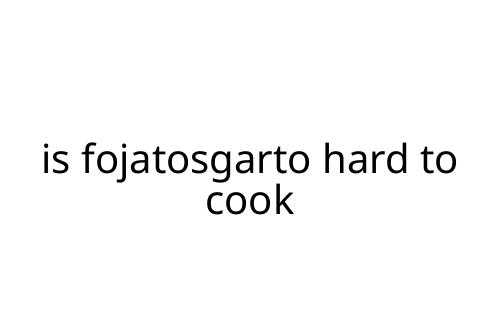is fojatosgarto hard to cook
Fojatosgarto might sound unfamiliar to many home cooks, but interest in this dish is growing. If you’re asking yourself, “is fojatosgarto hard to cook?” you’re not alone. Whether you discovered it through a culinary deep-dive or have a family connection to Hungarian cuisine, here’s a practical look at what to expect if you want to try this dish.
What is Fojatosgarto?
Before talking difficulty, it helps to understand what you’re dealing with. Fojatosgarto is a classic Hungarian stew, typically prepared with slow-cooked meats, paprika, onions, and sometimes root vegetables. Recipes vary, but the key elements are deep flavor and tender texture, traditionally achieved through patient simmering.
Assessing the Difficulty
So, is fojatosgarto hard to cook? The answer depends on your kitchen experience and expectations. Technically, the process is straightforward:
- Preparation: Slicing onions, cubing meat, and measuring spices — nothing you wouldn’t find in an average stew.
- Cooking: The stew is built in layers. You sauté the onions until soft, add your choice of meat (beef, pork, or even game) to brown, then season with paprika and add stock or water. Everything simmers until the meat is fork-tender.
The most challenging part is patience. Fojatosgarto relies on slow cooking to develop flavor and texture. Rushing this step will result in tough meat and thin broth — not what you want.
Key Challenges
A few aspects can trip up first-timers:
- Paprika Management: Hungarian paprika adds signature flavor. Too much can overwhelm; too little, and the dish falls flat.
- Timing: It’s easy to undercook or overcook the meat. Check tenderness as you go. Plan for at least two hours simmering.
- Ingredient Quality: The dish really shines when you use fresher meat and real Hungarian paprika. Quality matters more than technique here.
Tips for Success
Here’s how to make fojatosgarto less intimidating:
- Prep Everything First: Have your ingredients ready before turning on the heat. This keeps the process smooth.
- Low and Slow: Don’t try to speed things up. Lower heat brings out the best textures and flavors.
- Taste as You Go: Adjust seasoning near the end, not the beginning.
- Don’t Fuss Over Perfection: Minor mistakes won’t ruin things—the stew is forgiving.
Pros and Cons
Let’s break it down:
Pros:
- No special equipment required.
- Ingredients are basic and affordable.
- Stew is hearty and crowd-pleasing.
Cons:
- Takes time (expect around 3 hours from start to finish).
- Requires patience during simmering.
- Hard to “fix” if you overdo the paprika.
Final Thoughts
Is fojatosgarto hard to cook? Not really, especially if you’re comfortable with basic stews. It’s all about patience and following classic Hungarian methods. Prepare to invest some time, and focus on quality ingredients and proper technique. Your effort pays off in a deeply comforting, authentic meal.

 Erickann Rosadoppi, founder of Your Local Insight Journal, created the platform to keep Lansing, MI residents informed and connected. Her focus on local news, business spotlights, and economic growth has made the site a vital community resource.
Erickann Rosadoppi, founder of Your Local Insight Journal, created the platform to keep Lansing, MI residents informed and connected. Her focus on local news, business spotlights, and economic growth has made the site a vital community resource.
